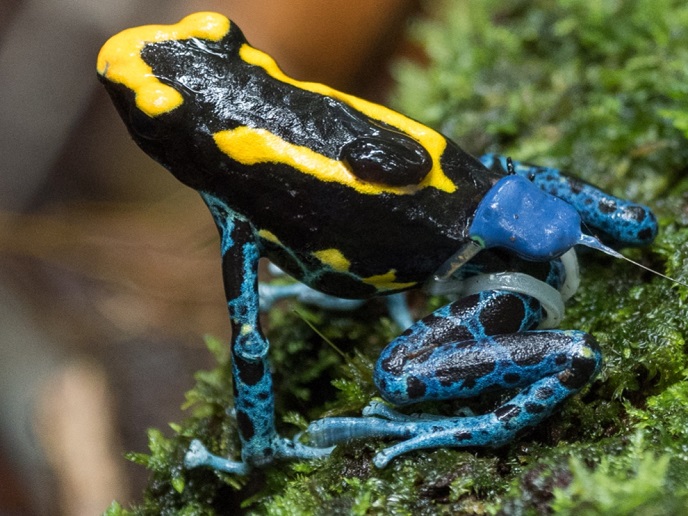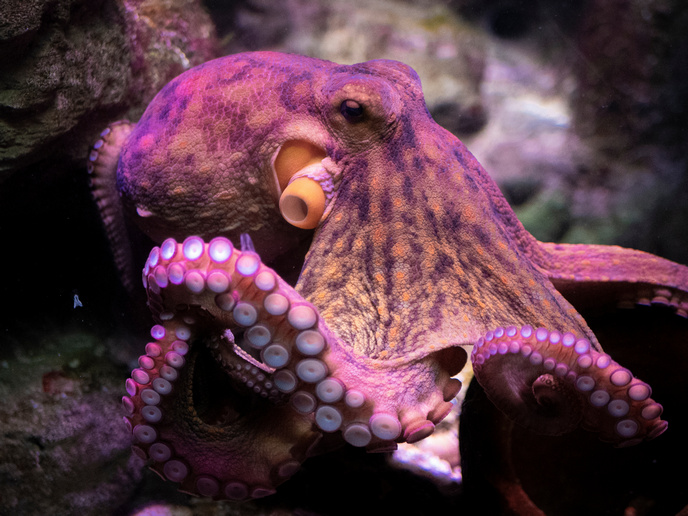Research reveals clues to sex differences and spatial abilities of amphibians
Most studies on sex differences and navigation skills have been conducted in laboratories with a few mammalian model species. However, elucidating how spatial cognition evolved in animals involves investigating diverse animal groups in their natural environment. “Amphibians demonstrate a great variation in their reproductive strategies and parental roles,” notes Andrius Pašukonis, coordinator of the EU-funded FrogsInSpace project. For example, in certain species, males take care of offspring, while females roam looking for a mate. Variable life histories between closely related amphibian species allow us to test contrasting hypotheses about how navigation skills evolved and differentiated between different sexes and species.”
Poorly studied amphibians challenge textbook wisdom
Supported by a Marie Skłodowska-Curie Actions Individual Fellowship, Pašukonis focused on poison frogs(opens in new window) – a group of small rainforest frogs with complex parental behaviours and well-developed navigational abilities. The researcher reported a complex relationship associating sex differences and movement patterns with the parental behaviour of poison frogs. In species where males perform the parental duties, males move more because they transport and disperse tadpoles(opens in new window). In species where females take care of the tadpoles, females have more extended home ranges and perform more complex movements than males. The Marie Curie fellow then compared the navigational abilities of males and females by translocating frogs away from their home territory and tracking their movements on their way back home. “Our study findings seem to reject the widely accepted hypothesis that sex differences in reproductive strategies predict sex differences in spatial abilities. We found that poison frog parental roles did not predict sex differences in navigation skills,” explains Pašukonis. Overall, caring for offspring seems to shape the parent’s behaviour and movements, which are essential for understanding how animals adapt to and interact with their environment. “Sex hormones seemed to also greatly influence amphibian spatial behaviour, just like mammals,” adds Pašukonis. “More exploration and higher navigation accuracy may be a side effect of higher testosterone levels.”
Investigating the molecular underpinnings of spatial behaviour
Although amphibians are critical for understanding the evolution of vertebrate cognition, the neural mechanisms underpinning their spatial behaviour have so far remained unclear. “We found that the medial pallium(opens in new window), the brain area responsible for spatial cognition in mammals, was also activated in poison frogs while exploring a novel environment in the lab,” highlights Pašukonis. However, different forebrain regions were activated when frogs sought to find their way home under natural conditions. According to the researcher, these preliminary findings indicate that despite being very distantly related to mammals, frogs share common neural machinery of spatial behaviour. However, the mechanisms allowing complex navigation over long distances in the wild might be amphibian-specific and have evolved independently. “We also revealed that, just like mammals, poison frogs rely on flexible spatial memory for navigation. Such cognitive abilities have been previously considered unique to mammals and birds, a view that our findings challenge,” remarks Pašukonis. “Understanding how animal cognitive flexibility and mental abilities were shaped by their environment is crucial for predicting how they cope with environmental change.”







